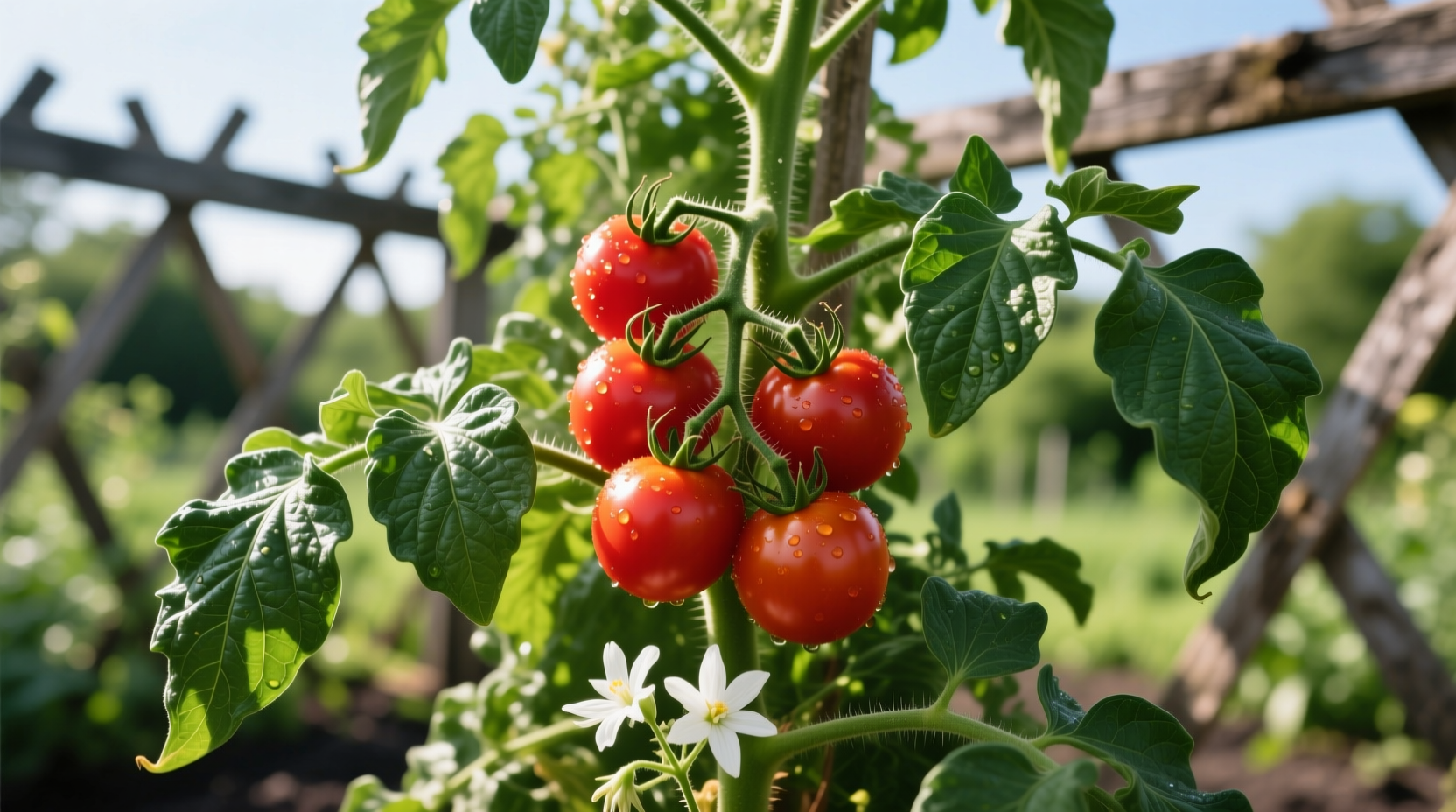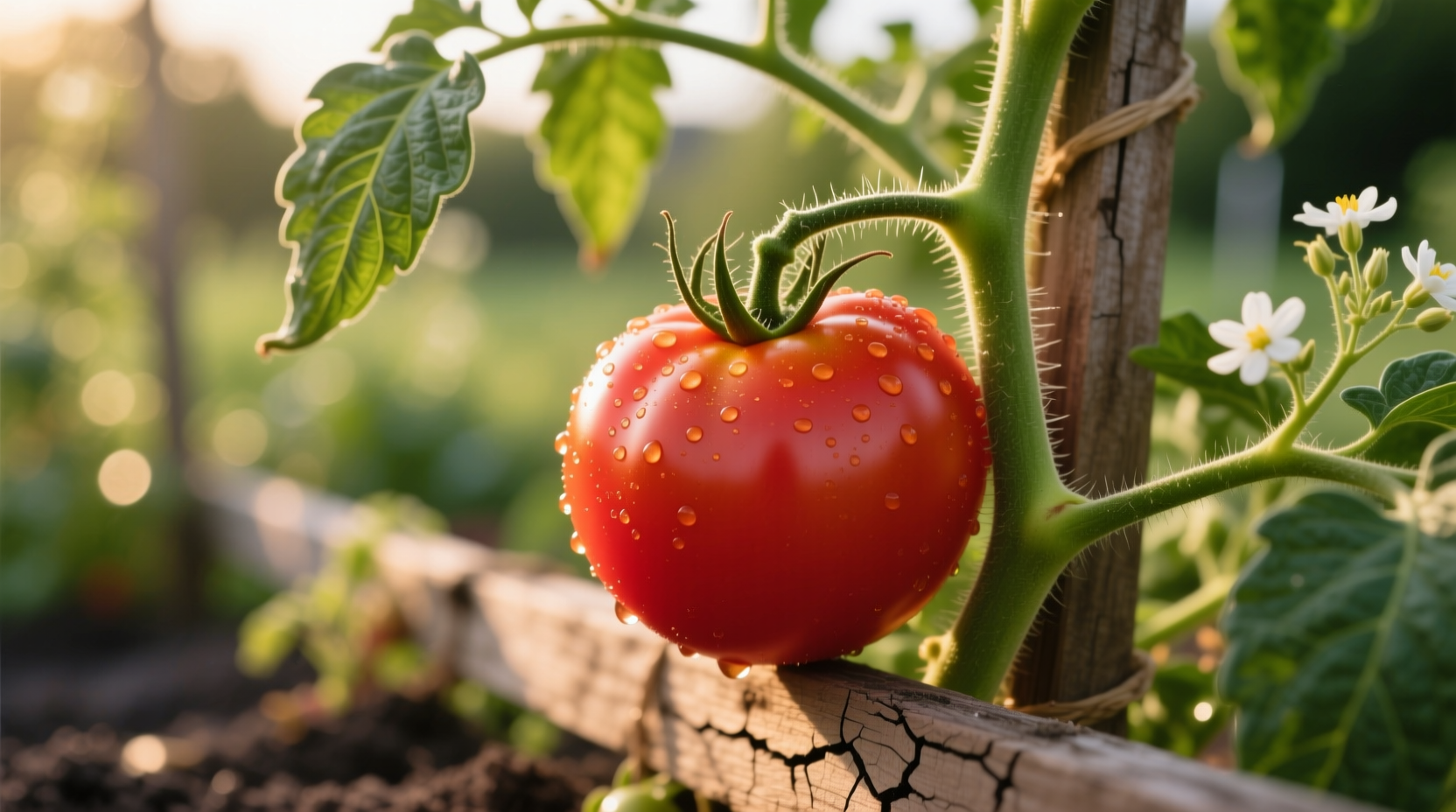Successfully growing tomatoes requires proper soil preparation, consistent watering, adequate sunlight (6-8 hours daily), and appropriate variety selection for your climate. Start seeds indoors 6-8 weeks before last frost or plant seedlings after soil reaches 60°F (15°C). Maintain consistent moisture without waterlogging, provide support structures, and monitor for common pests like hornworms and diseases such as blight. With proper care, most varieties produce harvestable fruit 60-85 days after transplanting.
Imagine plucking sun-warmed, vine-ripened tomatoes from your own garden—juicy, flavorful, and free from store-bought chemicals. Growing tomatoes successfully isn't reserved for expert gardeners; with the right approach, anyone can enjoy this rewarding summer staple. This guide delivers actionable strategies used by experienced growers to maximize your harvest, avoid common pitfalls, and select varieties perfectly suited to your space and climate.
Planning Your Tomato Growing Journey
Before you plant a single seed, understanding your local conditions prevents wasted effort. Tomatoes thrive in warm temperatures between 70-85°F (21-29°C) with consistent sunlight. The USDA Plant Hardiness Zone Map helps determine your first and last frost dates—critical for timing your planting. Most home gardeners achieve best results by starting seeds indoors 6-8 weeks before the last expected frost, giving plants a head start on the growing season.
| Variety Type | Growth Habit | Space Needed | Harvest Period | Best For |
|---|---|---|---|---|
| Determinate | Bush-type, stops growing at 3-4 feet | 24-36 inches between plants | Concentrated 2-3 week harvest | Container gardening, canning |
| Indeterminate | Vining, continues growing until frost | 36-48 inches between plants | Continuous harvest all season | Fresh eating, large gardens |
This fact comparison helps you select varieties matching your space and harvesting preferences. Determinate varieties like 'Roma' work well in containers, while indeterminate types such as 'Brandywine' deliver continuous harvests but require substantial vertical support.
Soil Preparation: The Foundation of Flavor
Tomatoes demand nutrient-rich, well-draining soil with a pH between 6.2-6.8. University extension research shows plants in properly amended soil produce up to 30% more fruit with superior flavor. Before planting, incorporate 3-4 inches of compost and a balanced organic fertilizer into your garden bed. For container growing, use a premium potting mix rather than garden soil, which compacts in containers.
When transplanting seedlings, bury the stem deeper than it grew in its pot—tomatoes develop roots along buried stems, creating stronger plants. The Cornell University Cooperative Extension confirms this technique significantly increases root mass and drought tolerance.
Watering Wisdom: Avoiding Common Mistakes
Inconsistent watering causes the most frequent tomato problems, including blossom end rot and fruit cracking. Maintain even soil moisture with deep, infrequent watering rather than daily sprinkling. Aim for 1-1.5 inches of water per week, increasing during fruit set and hot weather.
Water at the base of plants early in the morning to minimize evaporation and prevent fungal diseases. Drip irrigation or soaker hoses deliver water directly to roots while keeping foliage dry—a practice recommended by the University of California Agriculture and Natural Resources for reducing disease incidence by up to 50%.

Season Timeline: What to Expect Week by Week
Understanding the tomato growing timeline helps you anticipate needs and troubleshoot problems:
- Weeks 1-2 after transplanting: Focus on root establishment; minimal top growth
- Weeks 3-5: Rapid vegetative growth; begin side-dressing with fertilizer
- Weeks 6-8: Flowering begins; monitor for pests like hornworms
- Weeks 9-12: Fruit set and development; maintain consistent watering
- Weeks 13-16+: Harvest period; continue feeding and disease monitoring
This progression varies by variety and climate, but provides a general framework for what to expect. In cooler northern climates, the entire process may extend by 2-3 weeks compared to southern regions.
Pest and Disease Management: Organic Solutions That Work
Prevention beats treatment when it comes to tomato problems. Rotate planting locations annually to reduce soil-borne diseases. Space plants adequately for air circulation—crowded plants create humid microclimates where diseases thrive.
For common pests:
- Hornworms: Hand-pick or use Bacillus thuringiensis (Bt)
- Aphids: Spray with strong water jet or insecticidal soap
- Whiteflies: Yellow sticky traps plus neem oil applications
When diseases strike, the University of Florida IFAS Extension recommends removing affected leaves immediately and applying copper fungicide for bacterial spot or chlorothalonil for early blight. Never compost diseased material—bag and discard it to prevent spreading pathogens.
Harvesting for Maximum Flavor
Pick tomatoes when they've developed full color but remain slightly firm. They'll continue ripening indoors if needed, but vine-ripened fruit delivers superior flavor. Gently twist fruits from the vine, leaving the calyx (green cap) attached to extend shelf life.
Store harvested tomatoes at room temperature away from direct sunlight. Refrigeration destroys flavor compounds—only refrigerate if you must extend life beyond 3-4 days. For the sweetest flavor, harvest in the morning after dew dries but before midday heat.
Regional Growing Considerations
Your location dramatically impacts tomato success. In hot southern climates, choose heat-tolerant varieties like 'Solar Fire' and provide afternoon shade. Northern gardeners should select early-maturing varieties such as 'Stupice' and use black plastic mulch to warm soil.
Coastal regions with cool summers benefit from planting against south-facing walls that absorb and radiate heat. Container growing offers flexibility for urban gardeners or those with poor soil, but requires more frequent watering and feeding than in-ground plants.
Troubleshooting Common Problems
When issues arise, diagnose carefully before treating:
- Blossom end rot (black spots on bottom): Calcium deficiency caused by inconsistent watering, not lack of calcium in soil
- Yellowing leaves: Could indicate nitrogen deficiency, overwatering, or fungal disease
- Cracked fruit: Result of irregular watering after dry periods
- Blossom drop: Occurs when night temperatures exceed 75°F or drop below 55°F
Correct identification prevents wasted effort on inappropriate treatments. The USDA National Institute of Food and Agriculture emphasizes that proper cultural practices prevent 80% of common tomato problems before they start.
Frequently Asked Questions
How often should I fertilize tomato plants?
Feed tomatoes every 2-3 weeks with a balanced organic fertilizer after they begin flowering. Over-fertilizing, especially with nitrogen, promotes leafy growth at the expense of fruit production.
Can I grow tomatoes in containers?
Absolutely—choose determinate varieties or compact hybrids for containers 18 inches wide and deep. Use quality potting mix, provide consistent watering, and feed more frequently than in-ground plants.
Why are my tomato flowers falling off?
Blossom drop typically occurs when nighttime temperatures exceed 75°F or drop below 55°F. High humidity or excessive nitrogen can also cause this problem. The flowers will return when conditions improve.
How do I prevent squirrels from eating my tomatoes?
Cover ripening fruit with netting or harvest tomatoes when they show first color changes. Motion-activated sprinklers effectively deter squirrels without harming them.











 浙公网安备
33010002000092号
浙公网安备
33010002000092号 浙B2-20120091-4
浙B2-20120091-4